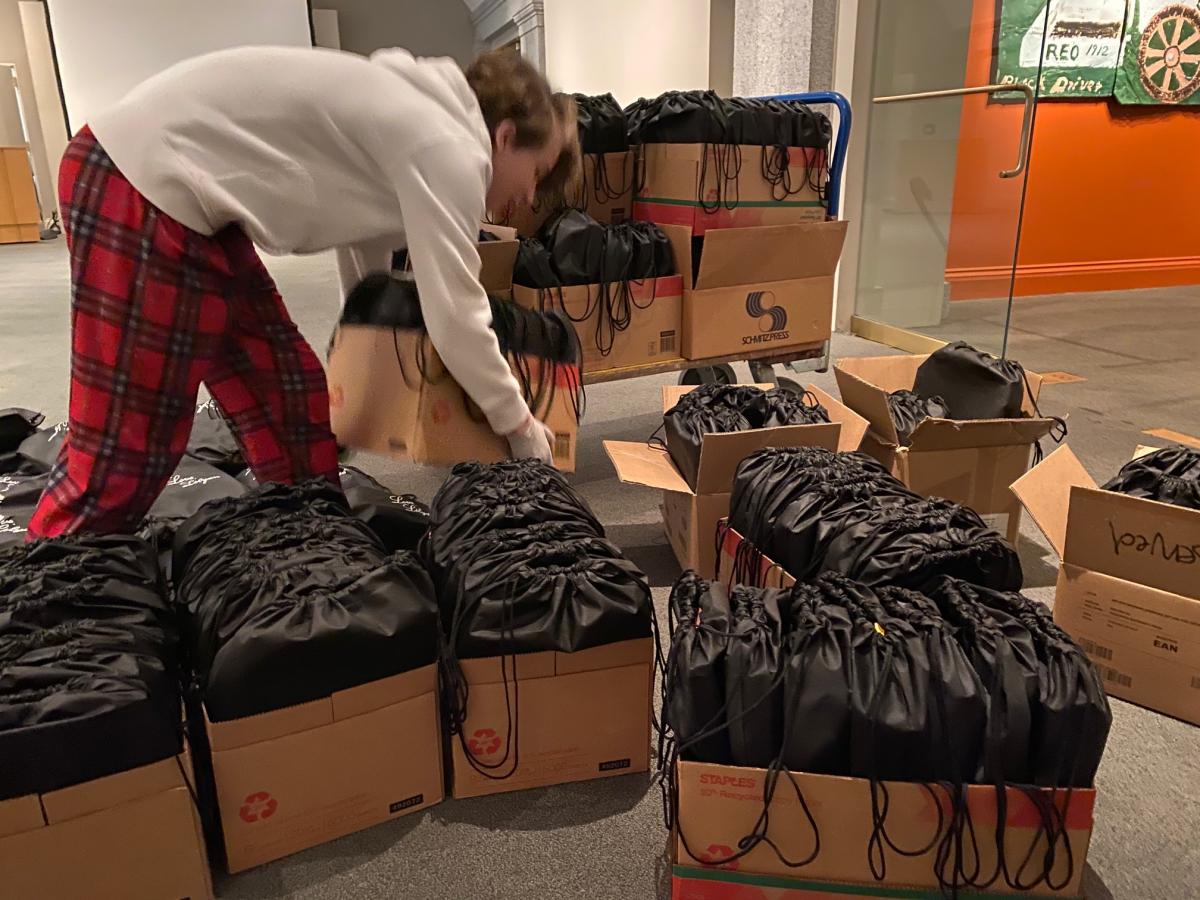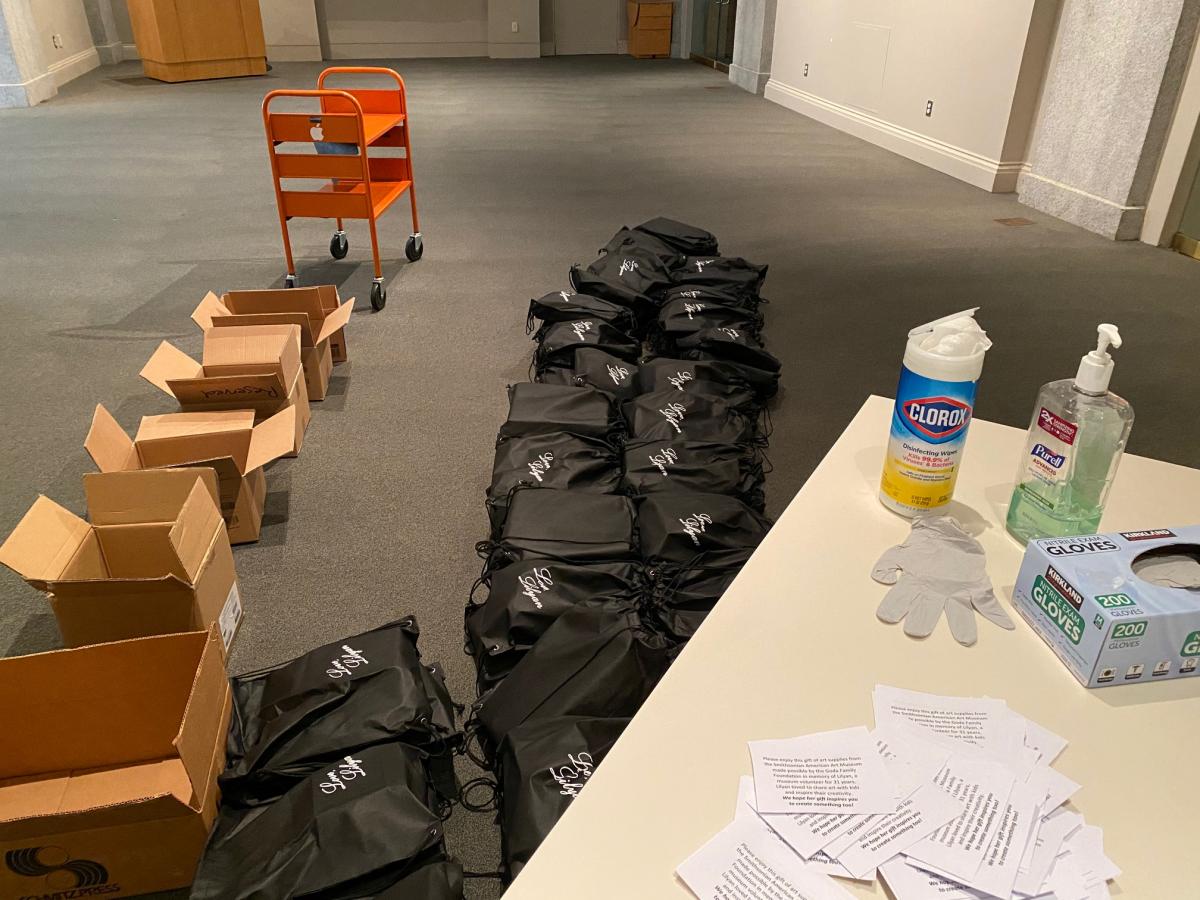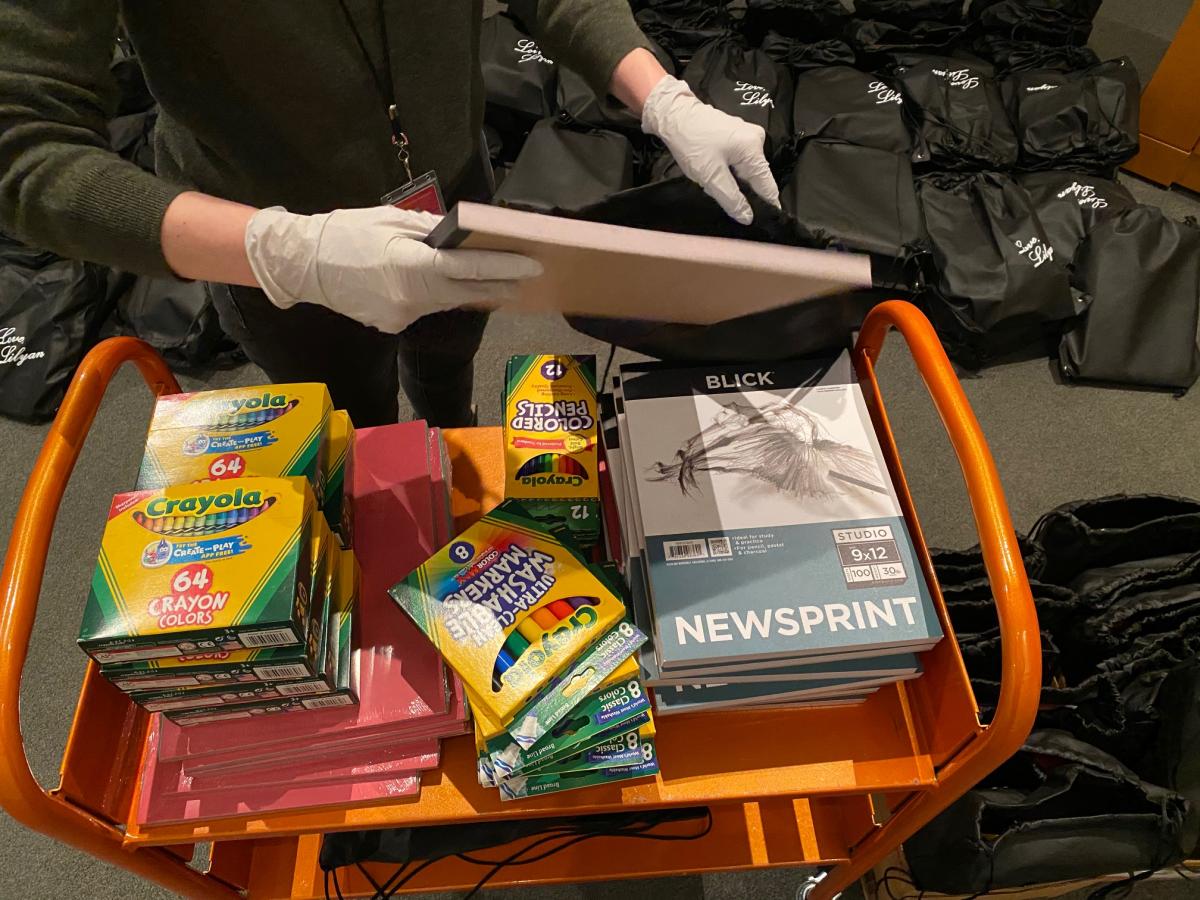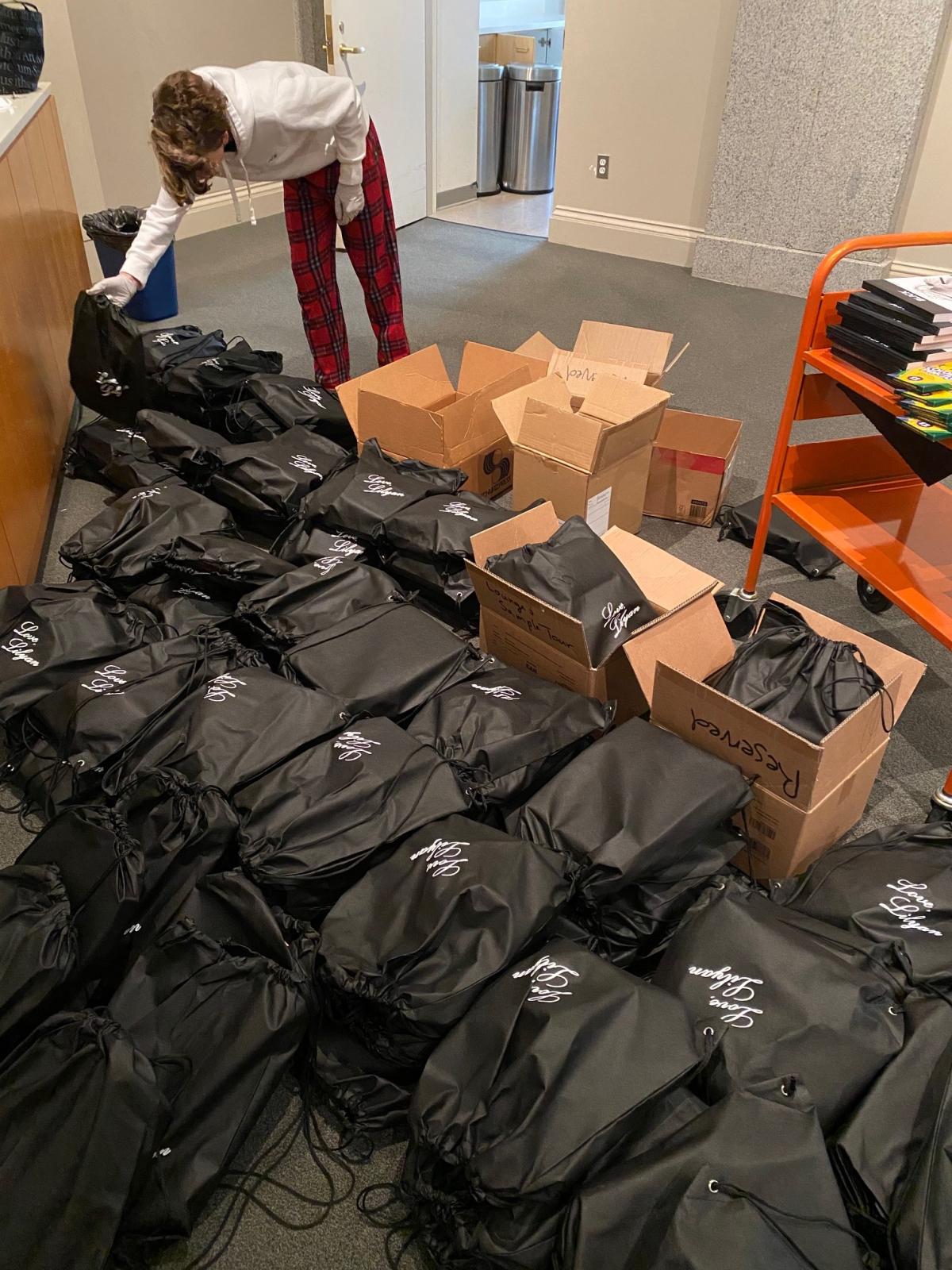
During the school year, thousands of students visit SAAM for field trips and student programs. So how can we continue to support students during an extended COVID-19 museum closure? We caught up with Carol Wilson, SAAM’s Lunder Education Chair, to hear about a special gift of art supplies to students in DC Public Schools.
How is SAAM is helping students stay creative when they can’t visit the museum?
With our team of museum educators working from home, we’ve been able to come up with some terrific creative ways to keep students engaged in artistic activities. Here’s a great example: last week, we delivered 160 backpacks full of art supplies to two DC Public Schools in Wards 1 and 8. Each backpack contained multicolored construction paper, a pad of drawing paper, the classic box of 64 Crayola crayons, markers, colored pencils, and postcards of artworks from SAAM’s collection. Thanks to the support of a generous donor, these backpacks are usually gifted to students at the museum when they come for tours. But when schools closed, we knew that families would be looking for ways to engage their kids during the new reality of at-home learning. So, we decided to take the backpacks to them!
How did you make these backpacks available to the community?
We reached out to schools serving as distribution sites for free meals for students across the city. While practicing social distancing and using a lot of hand sanitizer, a small team of three took turns, donning gloves and gathering supplies, packing the bags into boxes, and loading them onto flatbed carts to then pile them into two cars. The next morning we delivered backpacks to Francis L. Cardozo Education Campus and Stanton Elementary School. We encouraged parents to share back their students' art on social media if they’d like.
What was the reaction from schools?
The principals and school staff were terrific partners in helping orchestrate this. Stanton Elementary posted a message on social media with their thanks for the bags and Cardozo shared: “The students were elated once they received their backpacks. Students didn’t expect this gift and they are truly grateful. Thanks again for providing this donation to the school community.” I was also struck by supportive educators who commented: “This is the work of education that I believe makes the world a better, more compassionate place.” I think that, especially in times of anxiety such as this, making art can lift spirits and enrich experiences.
Tell us more about the donor of these art supplies.
The art supply backpacks are made possible by the generous support of the Goda family in memory of Lilyan Goda, who was a volunteer docent at SAAM for 31 years. Lilyan enjoyed leading school tours and helping children discover their creativity, and the backpack program was created in her honor in 2013. The idea was to provide good quality art supplies for kids in need to use at home. We never tire of seeing faces light up when students receive the backpacks. No matter what grade level, I think they are always most excited about the huge pack of 64 crayons in every color you can think of! And it’s always fun when students mail us their artistic creations made with their new supplies.
What are other ways SAAM educators are supporting teachers and students learning from home?
Fortunately, SAAM has a robust distance learning program and we’ve been connecting remotely with classrooms around the world for more than 15 years, so we are well-prepared to connect with curious students and adults wherever they learn. Our videoconference presenters taught three distance sessions with students in Michigan and Washington state this week, with hopes of more connections to come. Our educators have created short content videos and resources to support students learning on military bases worldwide, and we have conducted three webinars for teachers to model techniques for integrating art into their instruction, wherever they are teaching from.We also have archived professional development webinars for teachers, engaging video content such as our Meet the Artist series, and tons of standards-aligned curriculum resources to share. And we’ve partnered with our museum colleagues across the Smithsonian to create online learning collections and share resources.
Do you think we’ll be distributing backpacks again?
We’ll do our best to get supplies where they are needed. Right now, we are working on creating packets of student worksheets and image cards from our collection. We hope to make these available for families to pick up at meal distribution sites at DC schools. They can be used along with teacher lessons or for self-guided enrichment. This is a moment of experimentation for all of us, so we are trying out different options to see what works best for parents, caregivers, and students learning at home.
Check out all of SAAM’s education resources to inspire your own creative thinking with art.





















